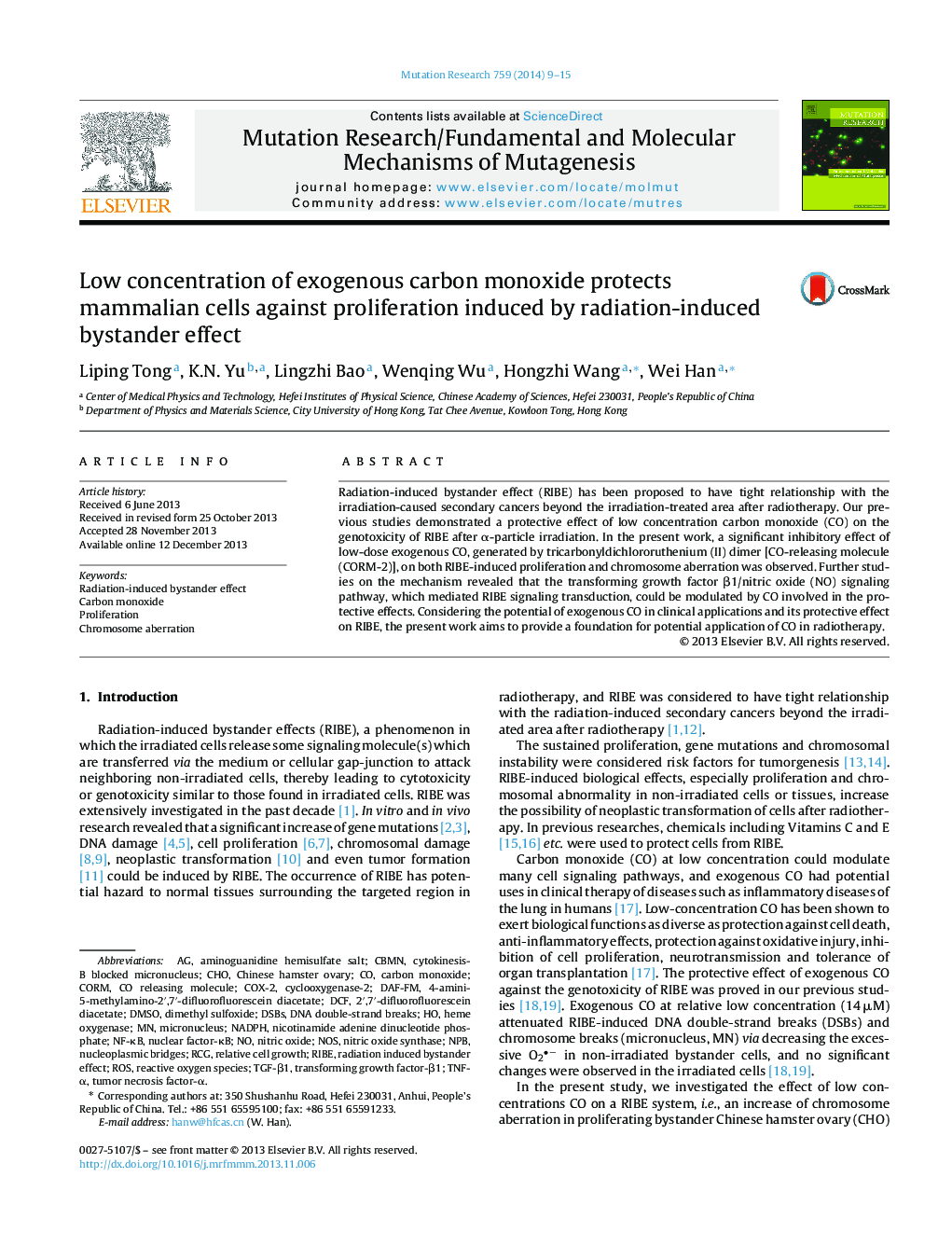| Article ID | Journal | Published Year | Pages | File Type |
|---|---|---|---|---|
| 2146365 | Mutation Research/Fundamental and Molecular Mechanisms of Mutagenesis | 2014 | 7 Pages |
•We show the possibility of modulate proliferation induced by radiation-induced bystander effect with low concentration carbon monoxide.•Carbon monoxide inhibited proliferation via modulating the transforming growth factor β1 (TGF-β1)/nitric oxide (NO) signaling pathway.•Exogenous carbon monoxide has potential application in clinical radiotherapy.
Radiation-induced bystander effect (RIBE) has been proposed to have tight relationship with the irradiation-caused secondary cancers beyond the irradiation-treated area after radiotherapy. Our previous studies demonstrated a protective effect of low concentration carbon monoxide (CO) on the genotoxicity of RIBE after α-particle irradiation. In the present work, a significant inhibitory effect of low-dose exogenous CO, generated by tricarbonyldichlororuthenium (II) dimer [CO-releasing molecule (CORM-2)], on both RIBE-induced proliferation and chromosome aberration was observed. Further studies on the mechanism revealed that the transforming growth factor β1/nitric oxide (NO) signaling pathway, which mediated RIBE signaling transduction, could be modulated by CO involved in the protective effects. Considering the potential of exogenous CO in clinical applications and its protective effect on RIBE, the present work aims to provide a foundation for potential application of CO in radiotherapy.
